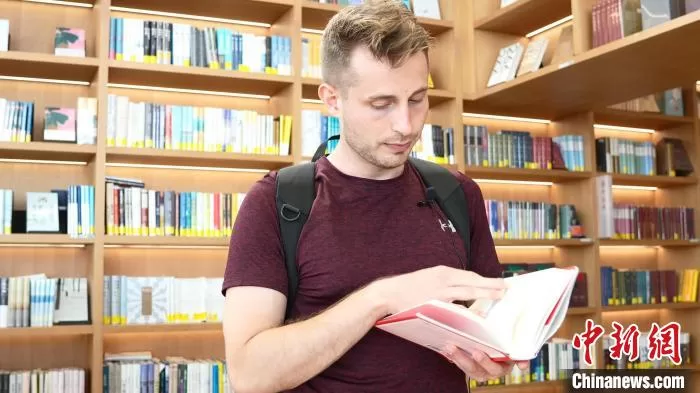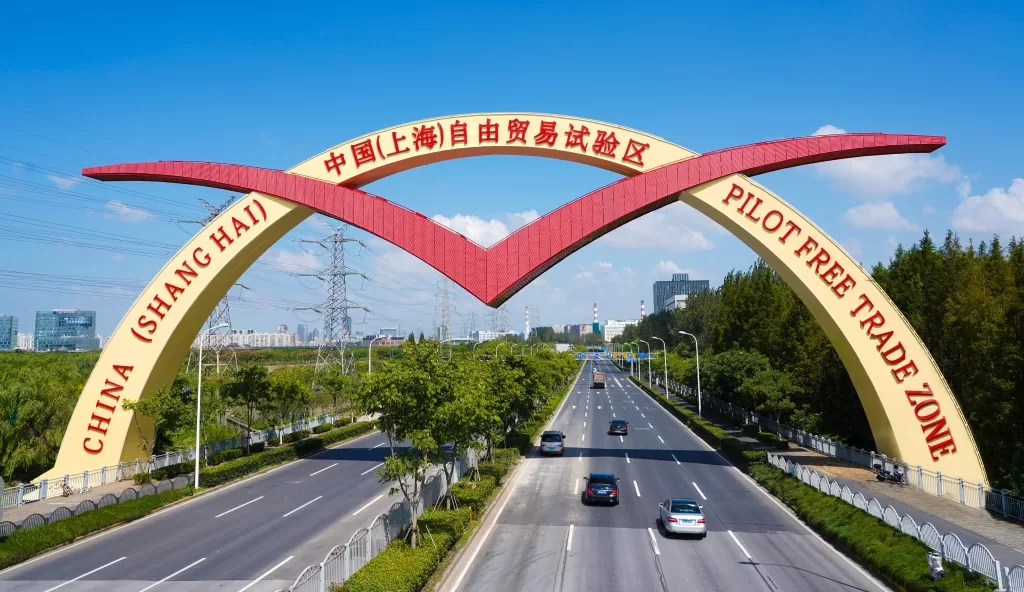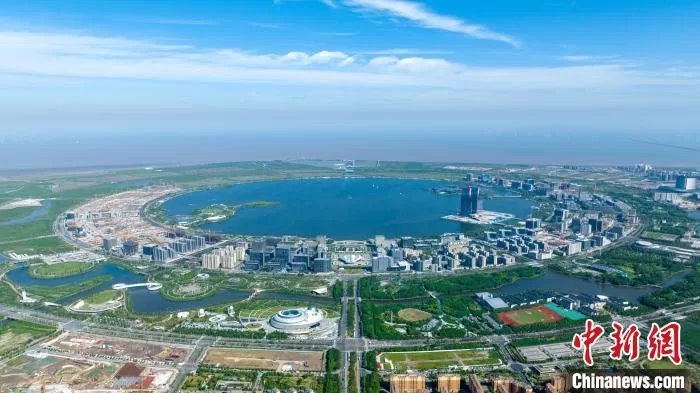Special article for Shanghai Free Trade Zone (FTZ)
Topics: Inside Shanghai FTZ
Original title:PR Jules: The great prospects of the Lingang New Area are worthy of young talents who devote themselves to development
Source: China News Service
Written by: Li Shuzhi, Yu Mei

Jules Thevenon, a 29-year-old French young man, is the international affairs public relations manager of Shanghai Lingang(临港) New Area Economic Development Co., Ltd. He has been working in the Lingang New Area of the China (Shanghai) Pilot Free Trade Zone (hereinafter referred to as the Lingang New Area) for two years, but continues to be amazed by the rapid changes in the Lingang New Area.
New companies are coming in droves, new factories are rising up from ground level, restaurants and coffee shops are popping up on the street corners… “This is a young city and it is also a city that belongs to young people.” Jules said.
Lingang’s history is not very long, and it is younger than many of the people who work here. However, Lingang’s prospects are promising; promising enough for young people from all over the world to come here to display their talents.
The Lingang New Area “is not simply an expansion of the free trade zone space and a translation of existing policies, but a deeper, wider area, with greater intensity of all-round high level openings.” At the beginning of the Lingang New Area, this sentence was a familiar one, to the outside world.
For Jules, who works in Lingang, ” there are new changes almost every day. In order to introduce Lingang accurately to global companies, I need to update my knowledge often.”
All these changes point towards one goal: openness and convenience.
After four years of development, the Lingang New Area has basically established an institutional open system with the “five freedoms and one convenience” as its focus: freedom of investment, freedom of trade, freedom of capital, freedom of transportation, freedom of personnel employment and convenient data connectivity. The latest data shows that in the past four years, Lingang New Area has formed 102 typical institutional innovation cases, including 48 national first-of-its-kind cases.
The international reinsurance business platform has been officially launched, the international oil and gas trading centre have completed the first cross-border LNG settlement transaction in RMB, and taken the lead in launching bonded LNG “ship-to-ship” bunkering business for international sailing ships… One after another, more and more project ‘firsts’ in the Lingang New Area have come to fruition.
As a foreigner, Jules has a simple understanding of the “mission” of the Lingang New Area: “The meaning of Lingang is to be open; to connect China and the world more closely.”
In the Lingang New Area, you can feel the economic vitality brought by businesses opening.
In 2018, China lifted restrictions on foreign ownership of new energy vehicles, and Tesla settled in the Lingang New Area, becoming the first foreign-funded car company to build a China-owned factory in China. In January 2019, Tesla’s Shanghai Gigafactory started construction, and the first completed vehicle rolled off the assembly line in December of that year, achieving a goal of “starting construction, completing construction, starting production, and launching in the same year”.
On September 6, the 2 millionth vehicle rolled off the assembly line at Tesla’s Shanghai Gigafactory. The factory took 33 months to produce the first million vehicles, but it only took 13 months to produce the second million.
Tao Lin, Tesla’s global vice president, once said that every day Tesla develops in the Shanghai Free Trade Zone, it is running at a sprint. “It is easy to start sprinting, but it is very difficult to maintain such a pace every day. ‘Running at a sprint’ is the biggest challenge and test for the development of the enterprise and the development of the region.”
Thousands of sails race, hundreds of boats compete for the current. In the Lingang New Area, many key industries are developing rapidly with the momentum of “sprinting from the beginning”.
Since the establishment of the Lingang New Area, Shanghai has issued municipal support policy documents for four consecutive years, mobilizing the city’s efforts to support the construction and development of the Lingang New Area. Today, the Lingang New Area is accelerating to build an industrial development pattern with technological innovation as the central driving force, advanced manufacturing as important support, and modern service industry as major advantages.
In terms of cutting-edge industries, efforts are being made to build a “6+2” cutting-edge industrial system. The annual output value of the intelligent new energy vehicle industry has exceeded 230 billion yuan as more and morekey enterprises such as CATL(宁德时代)andThunderSoft (中科创达)successively settled in the park. Construction of 12 key industrial projects including JCET(长电科技)has commenced.

Official data shows that over the past four years, the GDP of the Lingang New Area has grown at an average annual rate of 21.2%, and the gross industrial output value above designated size has grown at an average annual rate of 37.8%. Chen Jinshan, member of the Standing Committee of the Shanghai Municipal Party Committee, Secretary of the Party Working Committee and Director of the Management Committee of the Lingang New Area, said that the Lingang New Area has played a vital role as a “growth pole” and “engine” for Shanghai’s economic development.
Ruan Qing, deputy director of the Shanghai Municipal Development and Reform Commission, said that Shanghai will continue to promote the Lingang New Area to deepen and expand special economic functions and remain at the forefront of high-quality development.
In Jules’s view, the lofty ideals of the Lingang New Area are both a hefty and long-term project. “You need a little patience, but the Lingang New Area is worthy of young talents from all over the world coming here to develop.” (Enditem)










